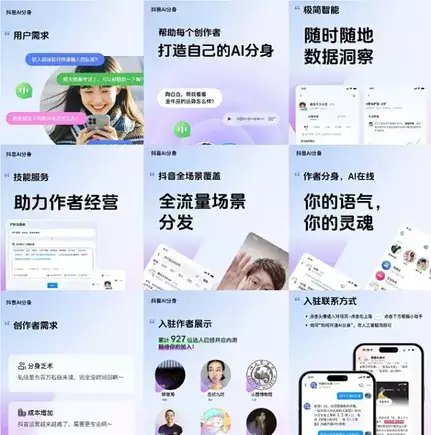In an era dominated by constant technological advancements, the landscape of digital interaction is undergoing significant transformation. Leading this charge is Meta, spearheaded by CEO Mark Zuckerberg, who envisions a social media experience increasingly populated by AI-generated content. This vision raises fundamental questions about the future of human interaction in digital spaces. As various platforms explore the incorporation of virtual avatars, we find ourselves contemplating the implications of such a shift.
Meta’s strategic direction aims to redefine how individuals connect online, with an emphasis on integrating AI-driven avatars that mimic the personalities and styles of their human counterparts. The recent advancements demonstrated during Meta’s Connect event showcased a video avatar tool designed to generate digital representations of creators. This tool capitalizes on existing data—previous posts and interactions—to construct avatars capable of engaging with audiences autonomously. Such innovations raise the prospect of continuous interaction, potentially bridging gaps in communication when creators are offline.
This approach underscores a significant pivot in social media; rather than communicating through traditional, human interactions, users might instead find themselves engaging with lifelike avatars. The question arises: will users accept these digital surrogates, or will they crave genuine human interaction that avatars simply cannot replace?
Douyin’s Pioneering Projects: A Model for the Future?
Meanwhile, TikTok’s Chinese counterpart, Douyin, is already delving deeper into the realm of virtual avatars with its newly launched “V Project.” This initiative aims to cultivate a rich ecosystem of AI-generated avatars that not only replicate creator personas but also engage with users around the clock. Douyin’s avatars possess the ability to conduct real-time conversations, provide personalized insights, and respond directly to audience inquiries.
This advancement is indicative of Douyin’s consistent innovation in digital engagement, as the platform has previously experienced success through digital influencers, particularly in live-streaming commerce. The interplay of virtual characters and real-time interactivity offers an intriguing glimpse into the future of user engagement and how it may diversify across platforms.
While the prospects of virtual avatars are undeniably exciting, skepticism abounds regarding their acceptance among users, particularly in Western markets. Historically, many trends that flourish in the Chinese digital ecosystem struggle to resonate with audiences in the U.S. or Europe. This divergence can be attributed to deeply ingrained cultural differences in interaction and communication preferences.
Critics argue that reducing human interaction to avatar-based communication could diminish the vibrant, spontaneous connections that characterize social media. Engagement with avatars, however sophisticated, still lacks the authentic nuances found in conversations with real individuals. Many users cherish the ability to interact with celebrities or influential figures, with the possibility of receiving a personal response. The introduction of avatars responding on behalf of creators risks diluting this experience, transforming rich dialogues into mere automated exchanges.
Although initial curiosity may draw users toward avatar technology, the sustainability of such engagement is uncertain. Users might revel in the novelty of conversing with lifelike bots, yet it remains to be seen whether this novelty translates into long-term satisfaction. Social dynamics are complex, often enriched by human idiosyncrasies that avatars cannot replicate, no matter how advanced the technology.
Even as digital platforms enthusiastically pursue AI integration, the central premise of social media remains human connections. While bots can provide structured interactions, fulfilling engagement borne from shared experiences and understanding remains irreplaceable. As users gravitate toward superficial likes and follower growth, perhaps they may ultimately seek a balance where they can enjoy the convenience of AI technology while still valuing genuine human connections.
The movement toward virtual avatars represents a fascinating development in the realm of digital interaction. As platforms like Meta and Douyin pioneer these innovations, users are positioned at a crossroads, facing the choice between engaging with avatars or maintaining the authenticity of human connections. Ultimately, the success of AI avatars will hinge on their ability to provide fulfilling experiences and whether they can coexist alongside the deeply-rooted human interactions that many hold dear. As this digital frontier expands, the interplay between technology, creativity, and human connection will shape the future of social media as we know it.

